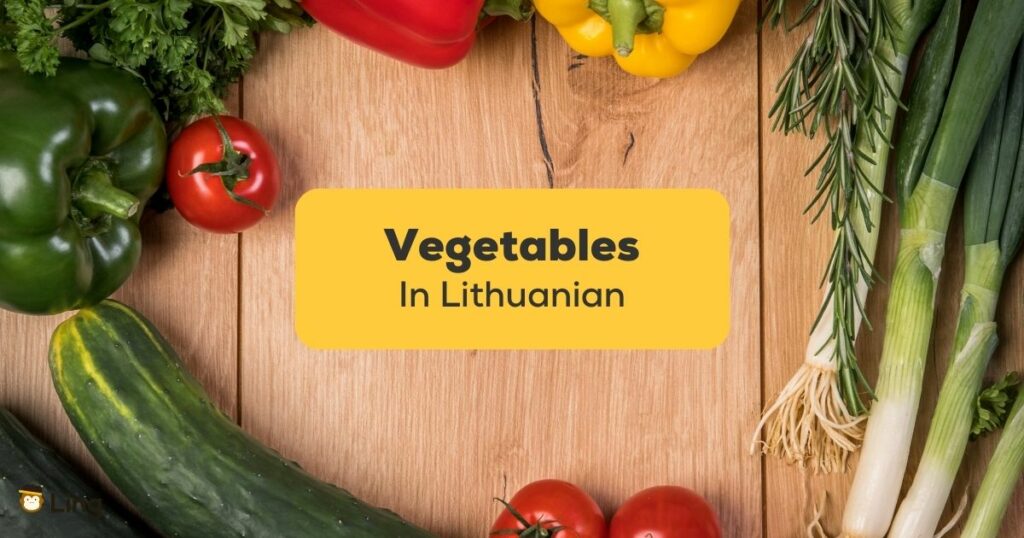Want to learn more about the Lithuanian language and cuisine? What better way than breaking down words used in famous Lithuanian dishes? Join us as we peel back the layers of Lithuanian vegetables, highlighting the five most popular vegetables used in daily life, and uncover how these yummy, locally sourced ingredients form an important part of Lithuanian culture and traditions.
We’ll also include vocabulary and cultural facts about these vegetables as you learn Lithuanian further. Let’s begin!
#1: Bulvės (Potatoes)
Of course, the humble potato, or “bulvės” in Lithuanian, comes in at #1 in this list. Eastern European countries love their potatoes! Boiled potatoes and grated potatoes are most used in traditional Lithuanian dishes. It is one of the staple foods and is incorporated into most if not all, dishes in Lithuanian food!
Some famous Lithuanian potato dishes include “Cepelinai” (potato dumplings filled with minced meat), “Bulvių košė” (potato pudding), and “Bulviniai blynai” (potato pancakes).
#2: Morkos (Carrots)
Carrots, or “morkos” in Lithuanian, are widely used in many Lithuanian dishes because of how they can be farmed in the region. Like most Baltic countries, carrots and potatoes are staples to hearty, comforting meals typically served in winter months.
Carrots are often included in traditional Lithuanian soups like “Bulvių sriuba” (potato soup) and “Moliūgų sriuba” (pumpkin soup).
#3: Svogūnai (Onions)
Onions, or “svogūnai” in Lithuanian, are another essential ingredient in Lithuanian cuisine. Onions are frequently sautéed or caramelized and used as a base for soups, stews root vegetables, and sauces in Lithuania.
One popular Lithuanian dish that showcases the versatile use of onions is “Balandėliai” (stuffed cabbage rolls), where onions are added to the meat, cheese sauce, and rice filling, giving it a delightful crunch.
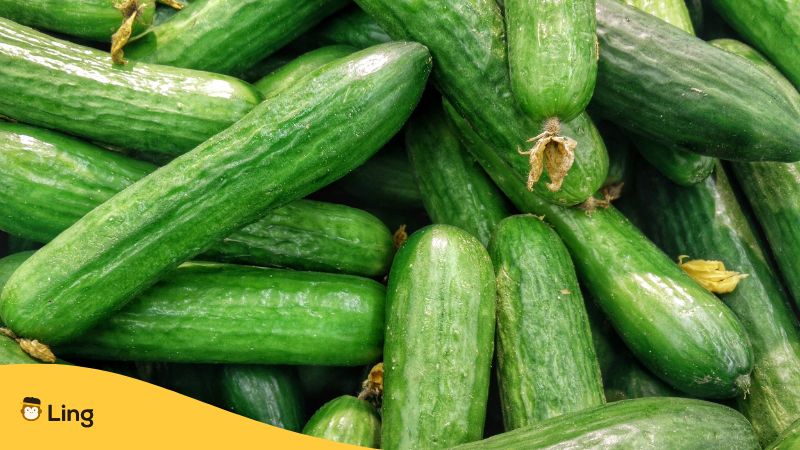
#4: Agurkai (Cucumbers)
Cucumbers, or “agurkai” in the Lithuanian vocabulary, are beloved for their refreshing and crisp texture that adds even more crunch. Lithuanians often enjoy cucumbers raw in salads, such as “Šaltibarščiai” (cold beetroot soup with sour cream) or as a side dish alongside main meals.
Cucumbers can also be pickled, creating “Rauginti agurkai.” These pickles are a common sight on Lithuanian tables, adding a tangy crunch to savory dishes and hearty meals. Pickles are a form of love for Lithuanians!
#5: Paprikos (Bell Peppers)
Bell peppers, or “paprikos” in Lithuanian, are vibrant and versatile vegetables used in Lithuanian cuisine. Bell peppers are frequently used in salads, stir-fries, and stuffed pepper dishes, “įdarytos paprikos”. Yum, I’m drooling thinking about all these incredible dishes!
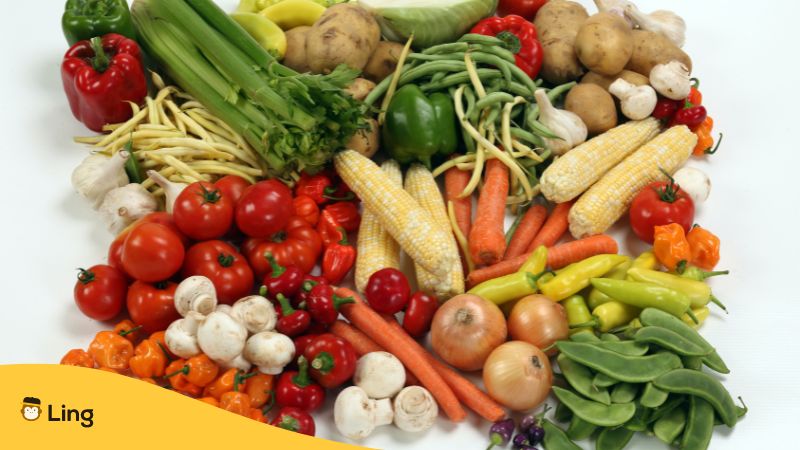
20 Lithuanian Vegetables In Lithuanian Cuisine
Do you want to learn more words for vegetables used in traditional Lithuanian foods? You might find some of these ingredients when you’re ordering food in a local Lithuanian restaurant. So, here are 20 Lithuanian vegetables to memorize.
| English | Lithuanian |
| Cabbage | Kopūstas |
| Beetroot | Burokėlis |
| Radish | Ridikas |
| Tomato | Pomidoras |
| Cauliflower | Karnavalių kopūstas |
| Leek | Poras |
| Celery | Salieras |
| Parsnip | Pastarnokas |
| Zucchini | Baklažanas |
| Turnip | Rūgštynė |
| Peas | Žirniai |
| Beans | Pupelės |
| Asparagus | Sparagai |
| Pumpkin | Moliūgas |
| Corn | Kukurūzas |
| Spinach | Špinatai |
| Eggplant | Baklažanas |
| Brussels sprouts | Briuselio kopūstai |
| Artichoke | Artišokas |
| Mushroom | Grybas |
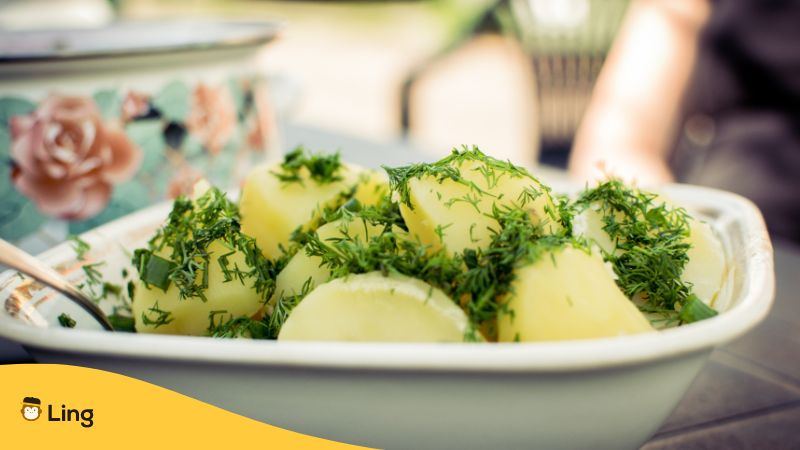
Lithuanian Vegetables In Culture & Tradition
Vegetables and local Lithuanian fruits play a significant role in Lithuanian culture and traditions, particularly during festive occasions and family gatherings. The use of locally sourced, seasonal vegetables is highly valued, reflecting the country’s deep connection with nature and agricultural traditions. Many Lithuanian families have vegetable gardens, where families grow their own produce, fostering a strong bond with the land and promoting sustainable living through generations!
Vegetables are often also featured in traditional folk art and craftwork, such as intricate vegetable weaving and vegetable-based decorations during festivals. These creative expressions use vegetables as symbols of fertility, abundance, and the celebration of nature’s bounty. Vegetables are a serious business in Lithuania! Let’s explore a couple of festivals where vegetables play a prominent role:
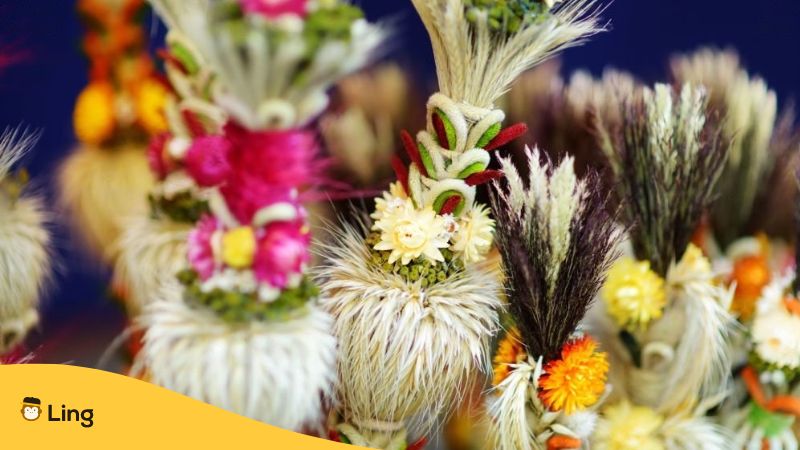
Užgavėnės – Shrove Tuesday
Užgavėnės, Lithuania’s traditional carnival, marks the end of winter and the arrival of a better weather, spring. During this festive occasion, the streets come alive with colorful processions, music, and vibrant costumes. As part of the festivities, people create intricate masks and costumes adorned with vegetables, such as turnips (ropės), carrots (morkos), and beets (burokėliai), transforming themselves into fantastical creatures. This tradition showcases the creative use of vegetables as a form of self-expression and adds a touch of fun to the festival!
Joninės – Midsummer’s Eve
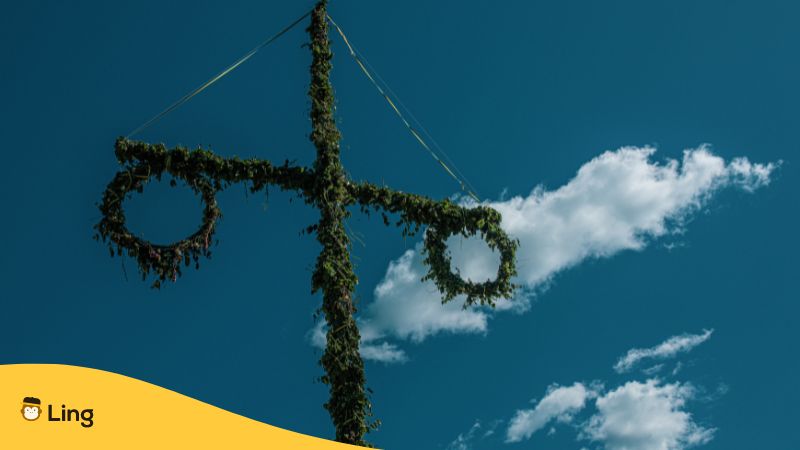
Joninės, also known as Rasos, is a joyous traditional celebration held during the summer solstice, honoring the longest day of the year. It is a time when Lithuanians gather around bonfires, sing traditional songs, and engage in a Lithuanian feast!
One such ritual involves young women and girls wearing floral wreaths adorned with herbs, fresh berries, and flowers, including edible ones like dill, chamomile, and marjoram. These wreaths symbolize fertility and the abundant harvest to come. Vegetables, such as radishes (ridikėliai) and green onions (žalieji svogūnai), are also often used to decorate the wreaths, reflecting the connection to nature and the land.
Wow! These festivals demonstrate the huge significance of vegetables in Lithuanian cultural celebrations. Who would have thought? Through the creative incorporation of vegetables, these festivities embody the country’s agricultural heritage, the changing of seasons, and the abundance of nature’s gifts to provide food to the people!
If Lithuanian food and traditions fascinate you, check out Lithuanian traditions and a Lithuanian guide for foodies!
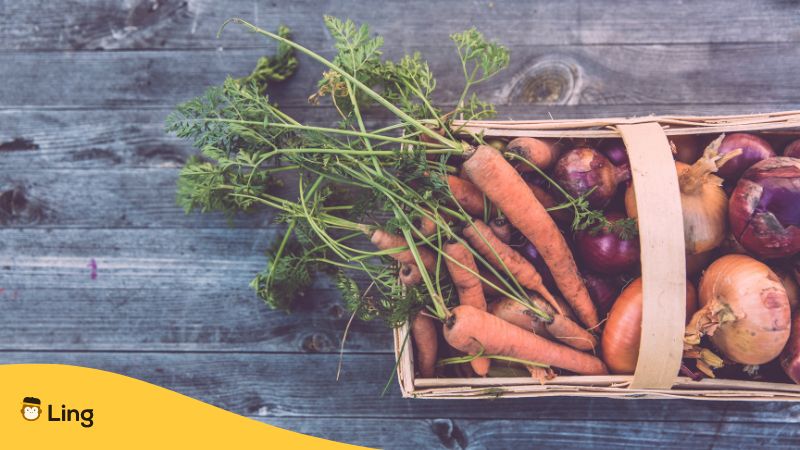
Wrapping Up
As you begin to learn Lithuanian, exploring the culinary traditions of a country can provide a deeper understanding of its culture, thus language. Lithuanian cuisine’s reliance on vegetables highlights the country’s agricultural heritage. By familiarizing yourself with Lithuanian vegetables, their uses, and their role in Lithuanian restaurants and daily life, you gain a valuable insight into Lithuanian culture. So, embrace the flavors, savor the dishes, and continue your language-learning journey!
Want more resources to help you learn the Lithuanian language? Download the language-learning Ling App today from the App Store and Play Store. It is a highly researched app meant for a fun and personalized language-learning experience. Aside from Lithuanian, there are over 60+ foreign languages to learn on Ling. Download it today!
